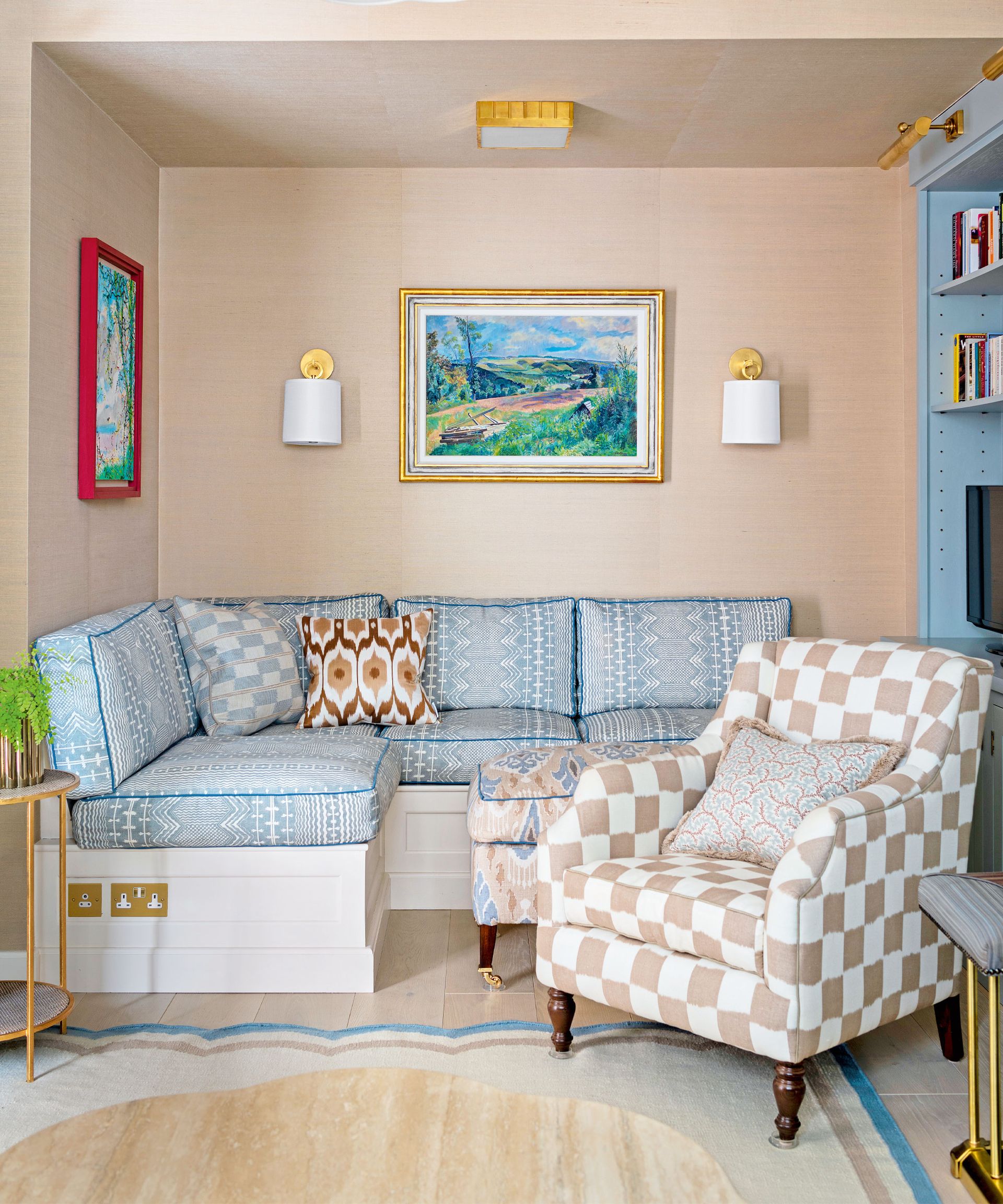Should a rug be darker than the flooring? We asked designers what works best
Rugs can sometimes be the biggest piece of decor in your room, so getting this right is key

Decor Ideas. Project Inspiration. Expert Advice. Delivered to your inbox.
Thank you for signing up to Homes & Gardens. You will receive a verification email shortly.
There was a problem. Please refresh the page and try again.
An area rug is a pretty dominant part of any room, and despite being considered more of a piece of decor than a piece of furniture, it often takes up more room and definitely more space visually than a couch, a bed, or a dining table. So deciding on whether a rug should be darker than your flooring is as important a decision as deciding on the colors of any other piece of furniture you bring into the space.
When deciding on a rug you of course want to consider size and shape and pattern and color, but you also really need to think about how it's going to look against the flooring underneath. Do you want the rug to pop against the flooring or subtly blend in? Do you need it to provide a lift for the darker floor below or ground a lighter shade?
We asked designers what approach to this flooring idea they think is best. Should an area rug be lighter or darker than the flooring it sits on?
Should a rug be darker than the flooring?

We would like to preface this, as we do all interior design 'rules', there's no absolute right or wrong answer. Your answer as to what combination of rug and floor works best depends on the room, the shades, your personal style, and rug trends that can come and go. Designers will vouch for this too, do what works best in your space and maybe experiment too before you commit. The great thing about rugs is their flexibility, you can pull them up and try them in different spaces, so switch the rugs you have in your home around to see how different combinations work.
'Whether or not your rug is darker than the floor is really a matter of preference about the visual statement you're hoping to make,' explains Kathy Kuo. 'There's really no hard and fast rule here. The primary consideration should be finding a rug that you love, but if adding a strong contrasting element to your space is important to you, consider going either much darker or much lighter than your flooring.'
'A rug can add the perfect finishing touch to your home. It pulls the scheme together and helps to zone a space when working with a larger room. And don’t be afraid to add contrast with your rug by going for a darker color than the flooring.' adds Jenna Choate-James, co-founder of Interior Fox.
'A colorful and patterned rug adds great impact to neutral furniture and walls and works well at hiding a multitude of sins. But a bold design isn’t for everyone. A neutral rug with subtle texture gives a relaxing and calming feel to a scheme.'

When deciding whether you should go lighter or darker with your rug color the size and also how you use the room are two big factors to consider. Going darker with your rug in a smaller room can really shrink the space. Rug dimensions of the rug become like the 'walls' of the room and can create the illusion the room is much smaller.
However, going lighter with your rug color can really make a small room look bigger. We all know about the space-expanding effects of lighter shades, and a large rug that goes almost to the edges of the room, with all (or most) of the furniture sitting on top can help trick the eye into seeing more floor space than there might actually be. In short, smaller rooms go lighter with the color, larger rooms can handle the contrast.
'I think of this more as a question about contrast,' agrees designer Kati Curtis. 'There's no strict rule that a rug should be darker than the floor. However, a darker rug can add depth and richness to a room, especially if the floor is light in color. It can anchor the room and add a sense of warmth and coziness.'
'On the other hand, a lighter rug against a darker floor can brighten up a space and make it feel larger and more open. The key is to consider contrast, the overall aesthetic, and the color scheme and style when choosing a rug for your space.'

Also, consider the room and its functions. In a bedroom or living room, you can probably afford to go lighter with your rug color as these spaces don't see too much traffic. However, for a kitchen rug, that space is going to see a lot of wear and tear and you want to pick a color and a material that can handle it.
So with your kitchen flooring, we would recommend going for a rug that's darker than the floor, or if not darker than the floor a dark shade with a pattern that's going to disguise dirt and mess. Persian rugs or patterned rugs (as used here) are perfect. This style of rug looks best when they are a bit worn anyway, and the busy print will absorb any splashes or marks. It also works well with the darker stone flooring as anything lighter would create too high of a contrast and it would visually break up this narrow section of the kitchen.

And don't just focus solely on the color of the floor when deciding on your rug color, look to the rest of the room too. You might find there are more obvious places to pull your inspiration from.
As Gemma Holsgrove, Director at Sims Hilditch says, 'When choosing rugs for interiors, the floor color doesn’t play a huge role in our selection process. Most often the color of a rug depends on the room scheme, where inspiration is pulled from the art or the interior color palette. A rug can also be a work of art in itself and therefore inform the interior, whereas simple plain rugs can serve as a backdrop to furniture.'
FAQs
How do you choose a rug from your floor color?
The first decision is do you want your rug to be a focal point in the room or blend more seamlessly into the space? As we have mentioned, going for a color that's darker will make the rug a real feature in the room so better for larger spaces that can cope with that. Going lighter than your flooring, or for a very a similar shade works better in smaller rooms.
Should a rug ever match the floor color?
This look can work in some cases, so long as you are still getting that contrast from the different textures. For example in a bedroom, you might have a really light wooden flooring or plush cream carpet, you can bring in a bedroom rug in the same light shade but in a sheepskin or a jute, something that's going to highlight the difference between the rug and the flooring below. Otherwise, what's the point?
The takeaway? The color of your rug and deciding whether it should be darker or lighter than the flooring below is very much down to the space - the size, the style, the function. So make the decisions based on those key factors. And try out both options too, pull in rugs from around the rest of your home to see how different shades and combinations are working before you buy anything new.
Sign up to the Homes & Gardens newsletter
Decor Ideas. Project Inspiration. Expert Advice. Delivered to your inbox.
-
-
 18 best Pottery Barn Halloween decor buys – our top stylish and spooky picks from the entire collection
18 best Pottery Barn Halloween decor buys – our top stylish and spooky picks from the entire collectionFrom lighting to dining, and much more, we've searched through Pottery Barn's Halloween range and selected our favorites to decorate with
By Lola Houlton Published
-
 Sarah Paulson's porch features this 'controversial' former color of the year – experts say it could make you feel happier at home
Sarah Paulson's porch features this 'controversial' former color of the year – experts say it could make you feel happier at homeWith help from interior designer Amy Kehoe, the actor elevated her beach home with this controversial color
By Jennifer Ebert Published

